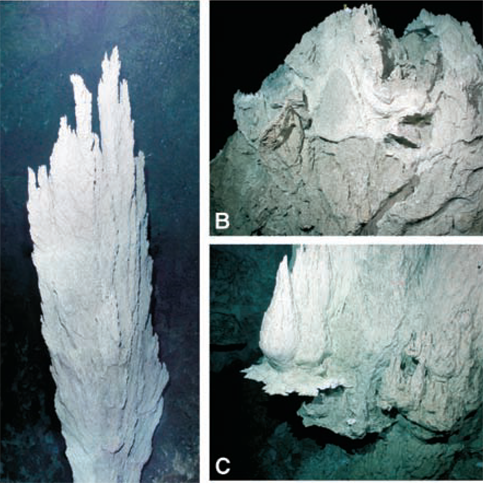Link to online paper: https://www.science.org/doi/10.1126/science.1102556
Abstract
The serpentinite-hosted Lost City hydrothermal field is a remarkable submarine ecosystem in which geological, chemical, and biological processes are intimately interlinked. Reactions between seawater and upper mantle peridotite produce methane- and hydrogen-rich fluids, with temperatures ranging from G40- to 90-C at pH 9 to 11, and carbonate chimneys 30 to 60 meters tall. A low diversity of microorganisms related to methane-cycling Archaea thrive in the warm porous interiors of the edifices. Macrofaunal communities show a degree of species diversity at least as high as that of black smoker vent sites along the Mid-Atlantic Ridge, but they lack the high biomasses of chemosynthetic organisms that are typical of volcanically driven systems.
